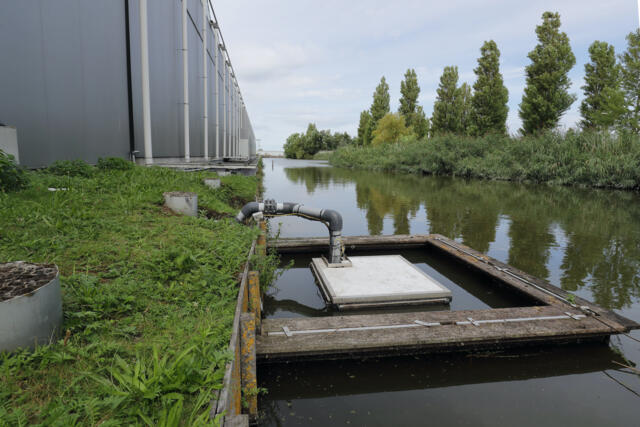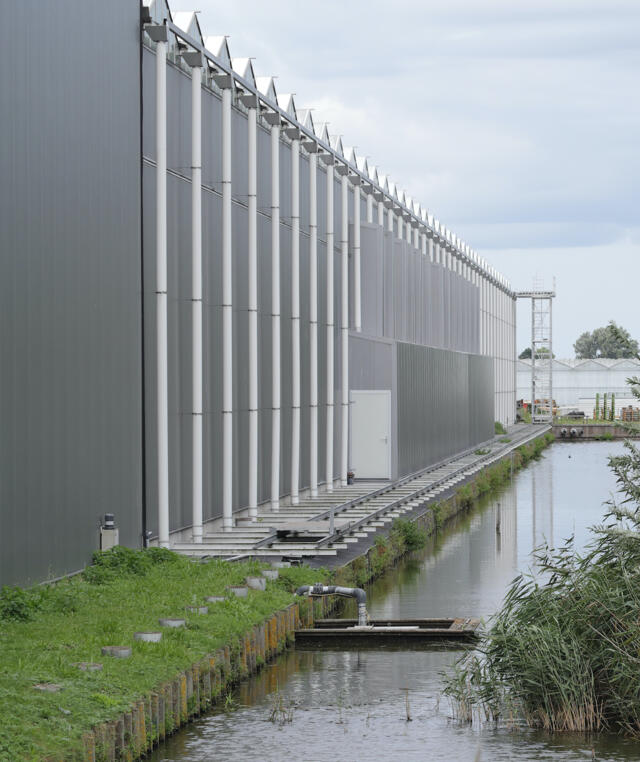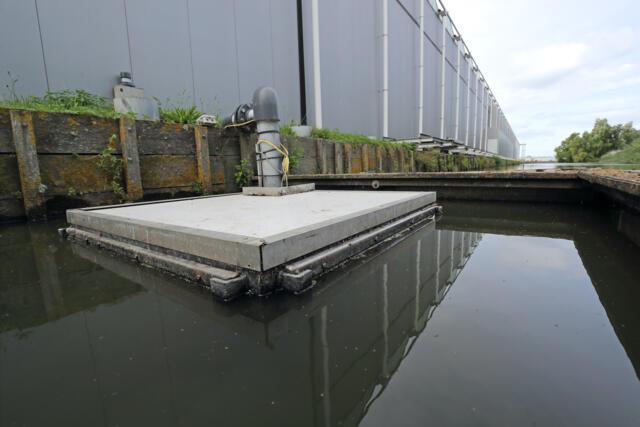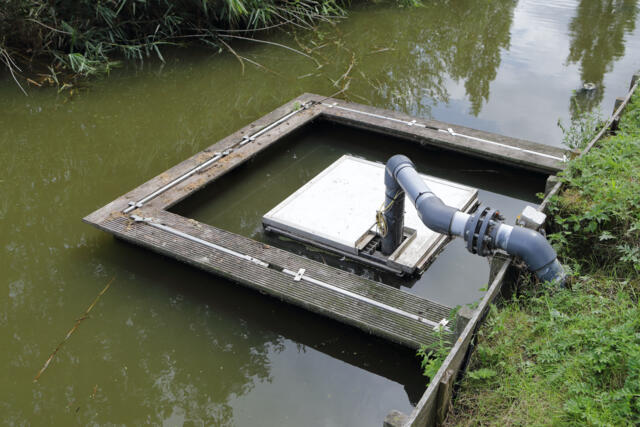
Heat from... a canal?
We harvest up to 15% of our necessary heat… from canals around our greenhouse! By making smart use of the Dutch polder landscape, we burn 100,000 m3 less gas per year.
Heat shortage in winter, How do we solve that?
In 2010 we expanded our acreage with a semi-closed greenhouse. The heat that is harvested in the summer by cooling the greenhouse is stored for use in the winter for greenhouse heating. Four pairs of sources in the subsurface at a depth of about 150 meters form the heat and cold storage (ATES). These sources contain either cold water or "low-grade" heat of around 40˚C. The heat from the sources can be efficiently upgraded with the help of heat pumps.
We were also one of the first companies to test LED lighting and apply it on a large scale. The availability of the ATES made the choice for a water-cooled LED system even more attractive. However, with one restriction: even if the ATES fails, the LEDs must be cooled in order to be able to continue to illuminate the crops. For this reason, a pump installation with a capacity of 200 m3 / h was installed in the canal adjacent to the company. This way, the cold water from the canal would be able to cool the LEDs in an emergency situation. However, the ATES functioned flawlessly and the emergency cooling was never used.
This sounds ideal, but it is important to know that a good balance is crucial for the correct functioning of a ATES system. When we, as a company, were starting to use more heat in the greenhouse than we put back into the ground, we noticed a structural heat shortage in our ATES. An excessively large cold water "bubble" threatened to be the result.

We put our heads together, In a creative discussion
Together with Bart van Meurs, we went in search of additional ways to 'harvest' sustainable heat. LTO GLaskracht Nederland had asked Bart to write an advice about the application of aquathermic energy at Koppert Cress and the potential of the technique for other horticultural companies.
So we went back to basics: water. The Netherlands is a wetland country, with many rivers and canals, which all secretly function as solar collectors. After all, the sun heats the water, especially in summer. There are many canals around Koppert Cress. Could this be a solution? How hot does this water actually get in the summer? And can we harvest that heat from the canals and put it in the ATES?

Nature has all answers, Especially for technical problems
The canals around Koppert Cress turned out to be wide and not very deep, so we concluded that the canals, like the 'energy roof', acted as a fantastic solar collector. We found that the water that returned after cooling the greenhouse was still significantly cooler than the temperature of the adjacent canal in the summer. The existing emergency LED cooling pump installation made implementation a piece of cake. For several years now, the water that comes from the greenhouse is heated up even more using the surface water of the canal before it is pumped back into the ATES. This system currently provides 15% of the annual heat requirement of Koppert Cress with a very low investment and little maintenance.
A combination of a pump installation, heat and cold storage in the ground and a heat pump appears to be an excellent alternative to a gas boiler. In addition, this is an emerging technique that will most likely also be eligible for SDE subsidy for the horticultural sector. This CO2-neutral heat extraction method also contributes to the surface water quality during summer.
This way, we make smart use of nature to continue our journey to a fossil-fuel-free and CO2-neutral greenhouse.
